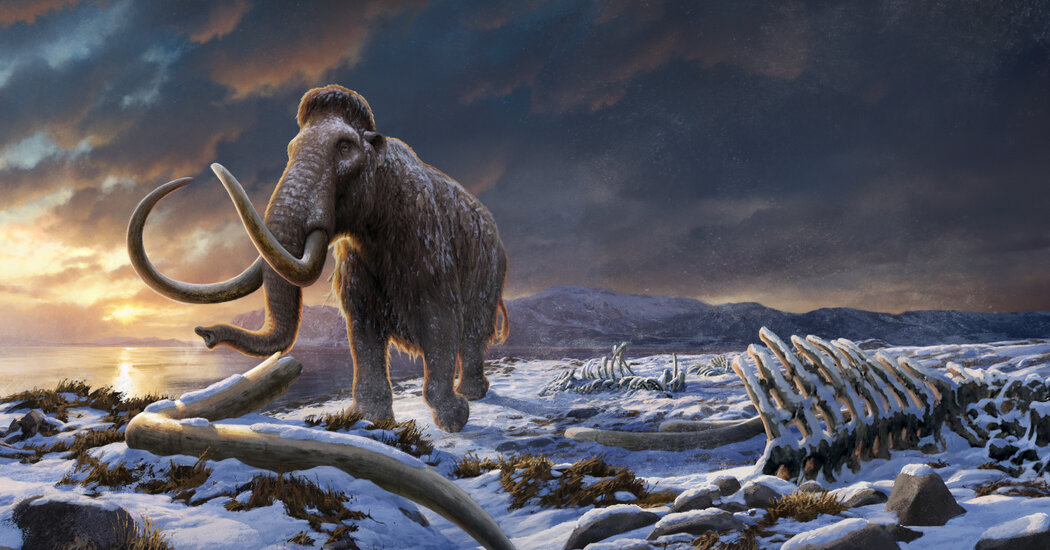The species survived on an island north of Siberia for thousands of years, scientists reported, but were most likely plagued by genetic abnormalities.
For millions of years, mammoths lumbered across Europe, Asia and North America. Starting roughly 15,000 years ago, the giant animals began to vanish from their vast range until they survived on only a few islands.
Eventually they disappeared from those refuges, too, with one exception: Wrangel Island, a land mass the size of Delaware over 80 miles north of the coast of Siberia. There, mammoths held on for thousands of years — they were still alive when the Great Pyramids were built in Egypt.
When the Wrangel Island mammoths disappeared 4,000 years ago, mammoths became extinct for good.
For two decades, Love Dalén, a geneticist at Stockholm University, and his colleagues have been extracting bits of DNA from fossils on Wrangel Island. In recent years, they have gathered entire mammoth genomes. On Thursday, they published a reconstruction of the genetic history of these enigmatic animals.
The scientists concluded that the island’s population was founded about 10,000 years ago by a tiny herd made up of fewer than 10 animals. The colony survived for 6,000 years, but the mammoths suffered from a host of genetic disorders.
Oliver Ryder, the director of conservation genetics at San Diego Zoo Wildlife Alliance, said that the study held important lessons for trying to save species from extinction today. It shows that inbreeding could cause long-term harm.
“The mammoth study allows one to examine that process over thousands of years,” said Dr. Ryder, who was not involved in the new study. “We don’t have data like that for the species we are trying to save now.”
